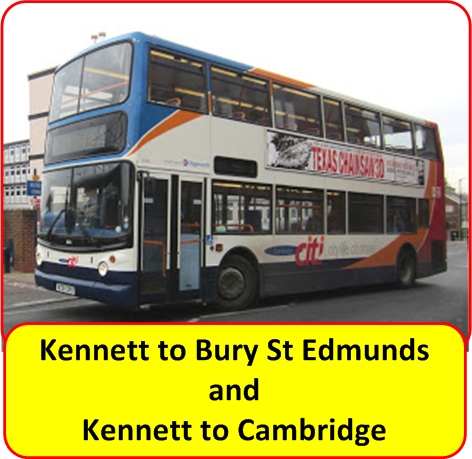Warning: Creating default object from empty value in /homepages/29/d532585652/htdocs/clickandbuilds/Joomla/Kenjoomla39/components/com_k2/views/itemlist/view.html.php on line 743
Super User
For Sale & Wanted
stuff that residents may have for sale or would want XXXXXXXXXXX
Village Services
Bury Road Garage
Ben Warren Building Services
Willow Car sales
Jarvis Car Sales
Thurlow Nunn & Standon
Kentford Village Stores Catering
Bell Inn
The Kentford
Sports Pavilion
Swanson Landscapes (Landscape Gardening)
Knappet Roofing
B15 Car Repairs & Servicing
Village News
Kennett Parish Council
Issues arising from the AGM and Meeting of Kennett Parish Council on 16th June 2014
Parish Council Positions
The Parish Council is still seeking a new Parish Clerk (temporary or permanent as this is now a vacant position) and now two Parish Councillors as well. Anyone interested in taking up any of these positions should contact the chairman, Darren Watson, at 14 Dane Hill Road, Kennett or E-mail him at This email address is being protected from spambots. You need JavaScript enabled to view it. The parish clerk is a renumerated position.
Village Website
The village web site is being revamped and should be updated and available by the end of July 2014. The URL will remain the same as http://www.kennettvillage.co.uk
Traffic Calming Measure
The parish anticipates that the traffic calming measure on Station Road south of Kennett Primary School will be completed by the end of 2014. The reduction of the speed limit to 30 Mph on Station Road between the school and the Dane Hill Road junction remains an aspiration and the parish remains on the reserve list for Highways Improvements projects in 2014/2015.
Security Assistance for the Elderly and Vulnerable Members of the Parish
The Parish Council has been approached to identify elderly and vulnerable members of the community who may require assistance to improve the security of their residences. Funding may be available to provide advice and fund locks and chains to prevent people becoming victims of crime. If you fall into this category and want to benefit from this offer, please make yourself known to Darren Watson (Chairman) at 14 Dane Hill Road or Diane Wallis (Parish Councillor) 126 Station Road.
Village Ammenities
Little Learners
Maclaren Sports field
Village Hall
Bell Inn
The Kentford
Ash Tree Vetinary Services
Animal Health Trust
Kennett Station
Post Office
Kentford Manor Care Home
Kentford Village Stores
Thurlow Nunn and Standen ( Stores/ hardware )
Bury Road Garage
Kennett Primary School
Clarke Phillips Estate Agents
The Trimming Room ( Dog Parlour)
Village Activities
Things going on in the village
Transport
Kennett/ Kentford Bus Services
Kennett is serviced by two main bus services one of which goes bwtween Newmarket and Mildenhall via Red Lodge. The other service is between Bury St Edmunds and Cambridge.
Please click either of the icons below to access the latest bus timetables:
Kennett Train Services
Kennett Station hosts train services to either Cambridge (Change for London Liverpool St. or London Kings Cross) or to Ipswich ( Change for services to Harwich International or Norwich). In addition you can change at Bury St. Edmunds and catch the crossrail services to Manchester and Liverpool via Peterborough and Sheffield.
Kennett station lies immediately to the north of, and tight alongside, the A14 - though its access is from a local road, the B1085. From its overbridge (south of the village), a gravel track leads down to free parking for a dozen vehicles. The old buildings have been demolished, though some of the space may now be in other use. The station is unstaffed, and has probably never been large. It now accommodates 3-coach multiple-unit trains at each of the staggered platforms. These are linked by a footbridge (temporary at the moment) which crosses the two tracks right by the bridge. A new footbridge is being constructed currently and its due to be completed in August 2014.The Signal box that can be seen in the picture was removed in 2011 and has been relocated at the Colne Valley steam railway. Both platforms have small bus type shelters.
It now accommodates 3-coach multiple-unit trains at each of the staggered platforms. These are linked by a footbridge (temporary at the moment) which crosses the two tracks right by the bridge. A new footbridge is being constructed currently and its due to be completed in August 2014.The Signal box that can be seen in the picture was removed in 2011 and has been relocated at the Colne Valley steam railway. Both platforms have small bus type shelters.
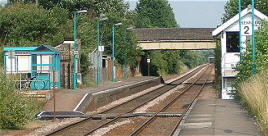
Click the buttons below for access to the latest timetable for trains to/ from Ipswich and Cambridge:
Please see the map below of the Anglia Region rail System
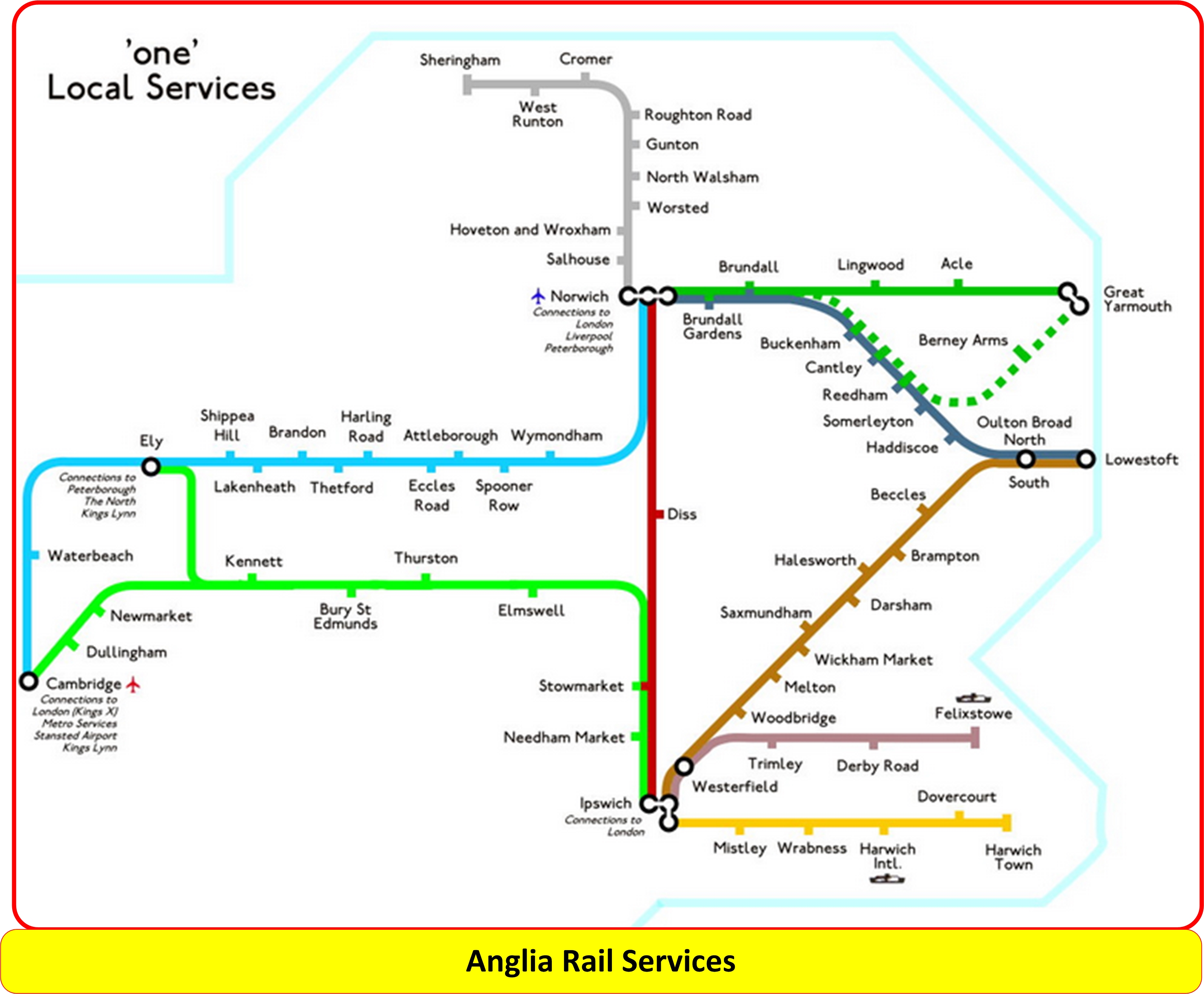
Airport Arrivals and Departures
The following icons will allow you to access directly the arrivals and departure boards of major airports in the South-East including Norwich.
St. Nicholas Church
Church Information
Address:
Parish Church of St Nicholas,
Dane Hill Road ,
Kennett,
Newmarket,
Suffolk
Information about diocese,
The Three Rivers Group of parishes is part of the Deanery of Fordham and Quy and the Diocese of Ely.
The Group comprises the parishes of:
- Chippenham - St Margaret
- Fordham - St Peter & St Mary Magdelene
- Kennett - St Nicholas
- Isleham - St Andrew
- Snailwell - St Peter
Each parish has its own Parochial Church Council (PCC), looks after its own finances and has its own style of worship.
The ministry team comprises:
Rector: The Rev'd Mike Banyard
Address: The Vicarage
24 Mildenhall Road
Fordham
Cambridgeshire
CB7 5NR
Tel:- 01638-721616
E-Mail:- This email address is being protected from spambots. You need JavaScript enabled to view it.
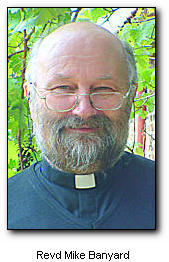
Associate Priest: The Rev'd Dr. Jenny Cage
Tel:- 01-353-666426
Mob:- 07515-732687
E-Mail:- This email address is being protected from spambots. You need JavaScript enabled to view it.This email address is being protected from spambots. You need JavaScript enabled to view it.
Image in Here!!
Licensed Lay Preacher: Mrs Helen Banyard
E-Mail:-
Image in Here!
Kennett Churchwardens: (to be advised)
Kennett PCC Treasurer:- (to be advised)
Kennett PCC Secretary:-(to be advised)
Church Services: ( These Commence at 15:30 and last for approximately 45 minutes. The services are aimed at the whole family and children are very welcome, no matter how young! )
All are welcome at all our services. If you live in the village please support your local church - we need you!
Reader(s)/ Sidesman Cleaning
Sunday 6th July 2014 Betty
Sunday 3rd August 2014 Carol
Sunday 7th September 2014 Josephine & Robin
Sunday 5th October 2014 Hayley & Andy
Church Notices
Kennet Church Cleaning Rota
Cleaning needs to be done towards the end of the week preceding a service. Please swap if the week allocated to you isn't convenient.
Weddings:
xxxxxxxxxxxxx
Christenings
xxxxxxxxxxxxxx
Funerals
xxxxxxxxxxxxxx
St Nicholas Church, Kennett, listed building description
Grade: IIs Listed Description:
Small parish church with an original early C13 nave, north aisle, and chancel extended later in C13 by one bay with three very fine windows and double piscina.
The tower appears to be late C13 or early C14, and to have been completed later in C14. The north doorway is transitional in style and noteworthy. The north porch, chancel arch and screen, and tower arch are C15. The roofs are modern and were possibly rebuilt after wartime bomb damage. Walls of flint and rubble originally plastered, with limestone and clunch dressings, clunch arcade, piscina and openings. Graded slate gable roofs with modern stone parapets and kneelers.
West tower and angle buttresses of four stages; embattled parapet, shallow plinth. Sealed belfry lights to west facade, two centred west doorway arch of two chamfered orders, second stage three light window in two centred arch with intersecting mullions; belfry window of two, cinquefoil lights with a quatrefoil in two centred arch.
North elevation: north porch has partly resorted C15 moulded arch. North doorway with round headed arch and label terminating at moulded imposts has two slender detached ringed shafts with water leaf capitals and moulded bases. North aisle, unbuttressed, with long and short stone quoins, similar to rear wall of tower and with original flint courses has three lancet windows, one a modern replacement.
Chancel, with original C13 flint coursing has a straight joint where it was extended later in C13. The lancet sanctuary windows, all partly restored, have detached shafts with deeply moulded bell capitals and bases, those in the east window have shafts with rings. The north window has two lancet lights, the south window three, and the east window three lights with a common label and head stops. The late C13 double piscina with foiled drains has two deeply moulded two centre arches with trefoiled inner arches, divided by detached shafts with deeply moulded caps and bases. Label has finely carved foliate stops and central boss.
North arcade of three bays and one bay terminating in wall of tower has two centred, steeply pitched arches of two chamfered orders with labels; octagonal piers with plain capitals and bases. C15 tower arch and chancel arch, two centred with two chamfered orders, moulded capitals and bases and semi octagonal piers. The screen, contemporary with the chancel arch is carved on both sides, the central arch a blind ogee with rosettes in the spandrels was once painted. The font, early C14 square limestone with chamfered corners stands on single shaft with moulded capital and base and square plinth. Stained glass windows, C19, by A Gibbs, 38 Bedford Street, London.
Additional Information:
Formerly listed grade A: , as Church of St Nicholas, List No 17/1.
Grade amended and address amended at Date Listed: 01/12/51
Grid Reference:
TL 69986835 Easting: 5699800 Northing: 2683500
Church History
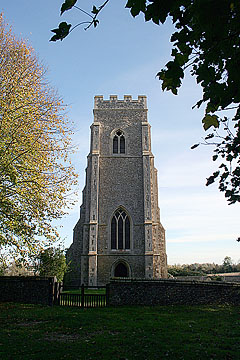 In 1256 Kennett had a church, whose advowson remained in the hands of the lords of the manor throughout the Middle Ages. In 1557 John Willoughby, held the right of presentation, which was exercised by successive lords of the Petre family in the late 16th century. In 1643 John Chenery presented Oliver Bryant, suggesting that the Petre family had sold that turn, but in 1696 the lord of the manor, Sir Samuel Barnardiston, presented. The advowson remained attached to the lordship during the 18th, 19th, and early 20th centuries, but in 1751 the bishop presented by lapse. In 1958 the advowson was not sold with the lordship to Mr. G. Lofts, although he believed that he had the right to choose the rector. In the late 20th century the patronage was held by the heirs of Mrs. Sickles, who lived in Philadelphia (U.S.A.). Proposals to unite the benefice with the neighbouring living at Chippenham in 1929 came to nothing, owing to the opposition of Kennett's squire. The living was nevertheless thereafter held in plurality with neighbouring livings in Suffolk and Cambridgeshire, and since 1974 was held with neighbouring Fordham, whose vicar was in charge at Kennett in 1997.
In 1256 Kennett had a church, whose advowson remained in the hands of the lords of the manor throughout the Middle Ages. In 1557 John Willoughby, held the right of presentation, which was exercised by successive lords of the Petre family in the late 16th century. In 1643 John Chenery presented Oliver Bryant, suggesting that the Petre family had sold that turn, but in 1696 the lord of the manor, Sir Samuel Barnardiston, presented. The advowson remained attached to the lordship during the 18th, 19th, and early 20th centuries, but in 1751 the bishop presented by lapse. In 1958 the advowson was not sold with the lordship to Mr. G. Lofts, although he believed that he had the right to choose the rector. In the late 20th century the patronage was held by the heirs of Mrs. Sickles, who lived in Philadelphia (U.S.A.). Proposals to unite the benefice with the neighbouring living at Chippenham in 1929 came to nothing, owing to the opposition of Kennett's squire. The living was nevertheless thereafter held in plurality with neighbouring livings in Suffolk and Cambridgeshire, and since 1974 was held with neighbouring Fordham, whose vicar was in charge at Kennett in 1997.
The living remained an unappropriated rectory during the Middle Ages. In 1279 the rector had 30 a. of glebe. During the 17th and early 18th centuries the 35 a. of glebe was divided between the three fields in 24 blocks of 1/2-2 a. Under the inclosure award of 1823 the rector was allotted 31¾ a. His main portion, 29 a. of arable, lay south of the church. The new rectory house was built on that land in the early 1830s, reducing the arable to 28 a. In 1912 a plan to sell the glebe to the lord was rejected, but 3/4 a. was sold in 1925 at the insistence of the rector. In 1947 the remaining glebe was sold, except for 3/4 a. reserved as the site for a new rectory house, but finally sold in 1967.
In 1254 the rectory was valued at £8, and the rector received another 5s. from land in neigh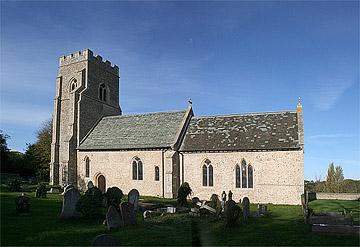 bouring Elveden (Suff.). In 1291 it was taxed at £12, and in 1535 valued at £11 10s. 8d. In the late 13th century the lord of the manor paid part of his tithe in kind with corn, and calves. About 1650, when the tithes were often taken by composition, the rectory yielded c. £60 a year, and was worth no more in the early 18th century. In the 1830s the gross income of the living was £135 a year, its net income £116. In 1837 the rector was awarded a rent charge of £200 in lieu of his tithes: in 1851 his gross income was £223, comprising £200 from commuted tithes, and £23 from the glebe rent. By 1887 the worth of the living had declined to £180 gross, and in 1928 the glebe rent had fallen to only £5. In 1929 the rector's request for an augmentation was rejected, but in 1931 he was given an additional £13 a year.
bouring Elveden (Suff.). In 1291 it was taxed at £12, and in 1535 valued at £11 10s. 8d. In the late 13th century the lord of the manor paid part of his tithe in kind with corn, and calves. About 1650, when the tithes were often taken by composition, the rectory yielded c. £60 a year, and was worth no more in the early 18th century. In the 1830s the gross income of the living was £135 a year, its net income £116. In 1837 the rector was awarded a rent charge of £200 in lieu of his tithes: in 1851 his gross income was £223, comprising £200 from commuted tithes, and £23 from the glebe rent. By 1887 the worth of the living had declined to £180 gross, and in 1928 the glebe rent had fallen to only £5. In 1929 the rector's request for an augmentation was rejected, but in 1931 he was given an additional £13 a year.
There was a parsonage house in 1279. In 1674 it had 4 hearths, and in 1712 a barn and stable yard were attached to it. The rectory house, which may have stood north-east of the parish church beside the old village street, was dilapidated and probably demolished in the late 1840s. William Godfrey, however, reported ample accommodation in 1851. In 1897 a new rectory was built opposite the church at the southern end of the village street. Between 1901 and 1929 it was occupied by successive rectors. In 1937 the drainage was improved, and a modern bathroom installed. That house, however, was too large to maintain, and in 1947 it was sold off, remaining in private ownership thereafter.
In the 14th century Kennett was held successively by six rectors, one serving for 33 years. There was a rapid succession of six rectors between 1439 and 1465, but John King served from 1465 until 1509. In the 16th century the parish was served by eight rectors: James Slater was deprived in 1555 for simony. His successor remained in office until 1580. In the early 17th century successive rectors held the living in plurality with neighbouring parishes in Suffolk. In the late 17th and early 18th centuries John Fairclough (d. 1696) and his son Richard (d. 1751) served in succession, effectively acting as squires. The living was held by John Bullen, 1756-75, and by his son Thomas, 1810-13, in plurality with livings in Suffolk, while Anthony Richardson was rector during the intervening years. In 1806 he preached at Kennett on every Sunday. George Mingay, who took over as vicar in 1813, also conducted services c. 1813-20 in Chippenham and Wicken for their absentee incumbents. After 1827, following his appointment as chaplain to the duke of Rutland and rector of Wistow (Hunts.), he was probably rarely at Kennett, resigning in 1833.
His successor, William Godfrey (d. 1900), was a popular incumbent, respected and admired by the parishioners. He paid for the restoration of the parish church in 1859, and brought numerous benefits to the village. Problems, however, arose after his death as a result of confusion between glebe and manorial land. His successor resigned in 1912 to take over the neighbouring living at Chippenham. Ernest Wooton served Kennett until he resigned in 1929 because of old age, under pressure from the patron and his ecclesiastical superiors. Wooton also served Kentford, assisted by a curate, and sought to improve the value of Kennett.
Between 1603 and 1676 the number of communicants increased from 50 to 63. The number receiving communion was c. 20-25 in the early 19th century, but in 1873 had risen to 46, before falling back to c. 23-25 c. 1885-97. Communion was celebrated four times a year in 1806 and 1820, in 1813 only three times a year, and in 1873 there was only one celebration a year. There was one service every Sunday during the early 19th century, and by 1851 two morning services and an evening one. Both in 1851 and in 1897, although there were no dissenters, about a third of the adult parishioners did not regularly attend church.
The parish church, named for ST. NICHOLAS by 1279, stood next to the main village street until c. 1865-73. After the diversion of the road eastwards it was approached by a hedge-lined avenue. Its design has been described as 'a miniature Ely cathedral', with its 15th-century west tower dominating the church and the surrounding landscape.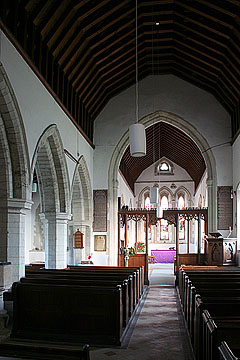
The church, built of flint and rubble, also includes a chancel and an aisled nave with north porch. The nave and north porch date from the late 12th and early 13th centuries, and the chancel from the 13th century. The lancet windows at the east end date from the late 12th century or early 13th. In the nave there are 14th-century arcades of four bays, 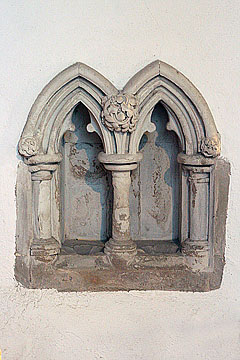 with octagonal piers and double chamfered arches, and a 14th-century rood screen and font. The double piscina dates from the 13th century, and has flowered drains and grape clusters carved at the ends of the moulded arches. In 1859 the church was thoroughly restored at the rector's expense, and in 1866 his sister paid for new stained glass. The church plate and oak altar are mid 19th-century. There are memorials to Sarah Chenery (d. 1607), and to Oliver Godfrey (d. 1817) and his son William (d. 1843) and grandson William (d. 1900), set on the south wall of the chancel and in the west wall of the nave. There are three bells, one of which dates from the 13th century. An organ, built by the students of Soham village college in the 1960s, is placed on the north wall of the chancel. The rector J. C. F. Hood left £250 for the maintenance of the church in 1957. A new burial ground of 8,100 sq. ft. was laid out beyond the churchyard walls in 1985. In 1996 masonry bees ate into the church walls and damaged the flints.
with octagonal piers and double chamfered arches, and a 14th-century rood screen and font. The double piscina dates from the 13th century, and has flowered drains and grape clusters carved at the ends of the moulded arches. In 1859 the church was thoroughly restored at the rector's expense, and in 1866 his sister paid for new stained glass. The church plate and oak altar are mid 19th-century. There are memorials to Sarah Chenery (d. 1607), and to Oliver Godfrey (d. 1817) and his son William (d. 1843) and grandson William (d. 1900), set on the south wall of the chancel and in the west wall of the nave. There are three bells, one of which dates from the 13th century. An organ, built by the students of Soham village college in the 1960s, is placed on the north wall of the chancel. The rector J. C. F. Hood left £250 for the maintenance of the church in 1957. A new burial ground of 8,100 sq. ft. was laid out beyond the churchyard walls in 1985. In 1996 masonry bees ate into the church walls and damaged the flints.
The small rhyme commemorates Sara Chenerye, who died in 1607 at the age of 25, during childbirth. Two more limina, I thought: the mightiest of all.the Chenerye brass
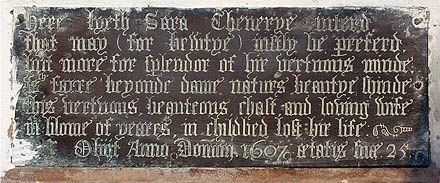 [The inscription says : here lyeth Sara Chenerye interd, that may (for bewtye) iustly be preferd, but more for splendor of hir vertuous minde, so faire beyonde dame naturs beautye shinde this vertuous, beauteous, chast, and loving wife in blome of yeares, in childbed lost hir life. Obiit Anno Domini 1607 aetatis sua 25.]
[The inscription says : here lyeth Sara Chenerye interd, that may (for bewtye) iustly be preferd, but more for splendor of hir vertuous minde, so faire beyonde dame naturs beautye shinde this vertuous, beauteous, chast, and loving wife in blome of yeares, in childbed lost hir life. Obiit Anno Domini 1607 aetatis sua 25.]
In Rememberance
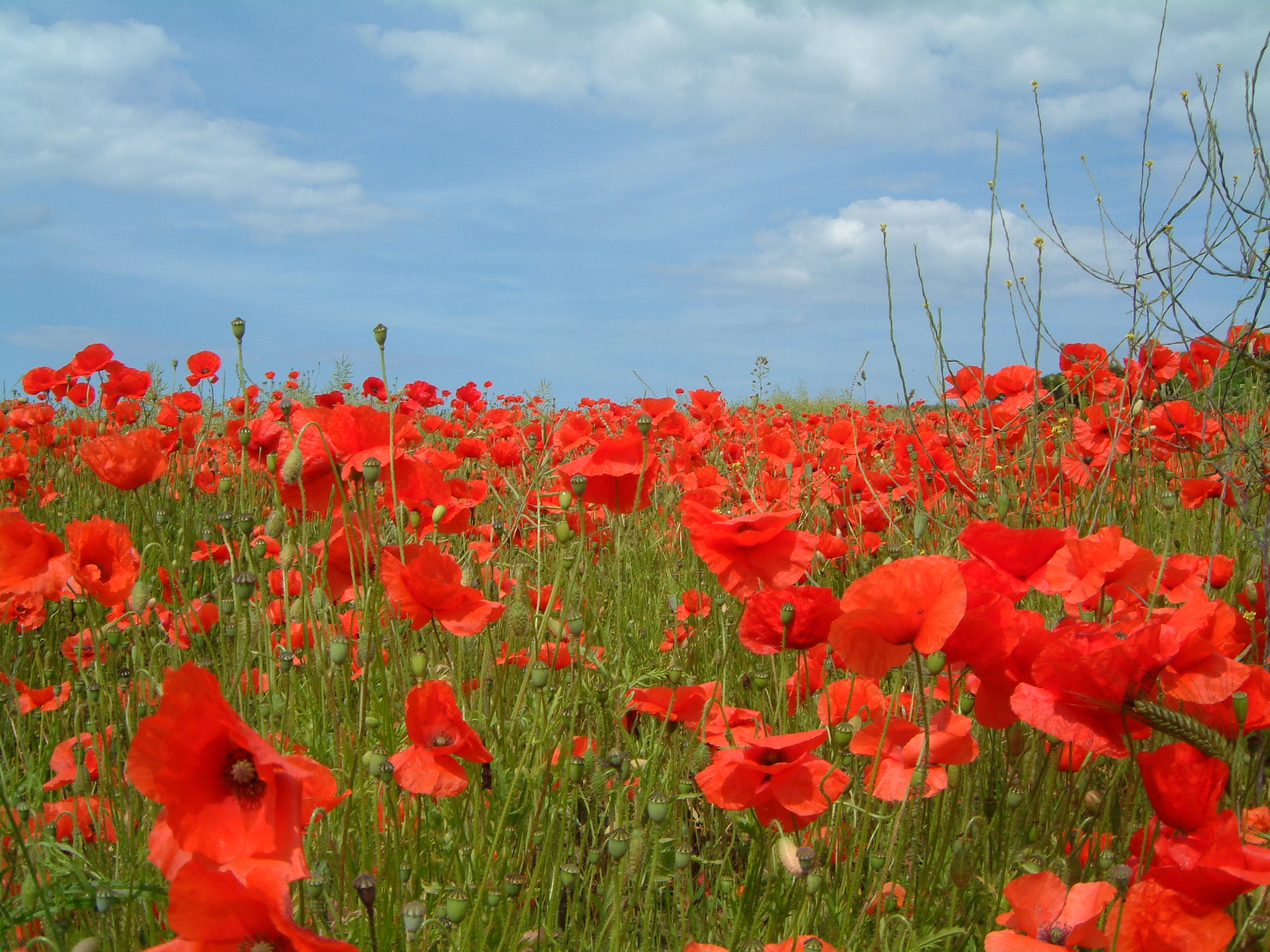 KENNETT - Roll of Honour
KENNETT - Roll of Honour 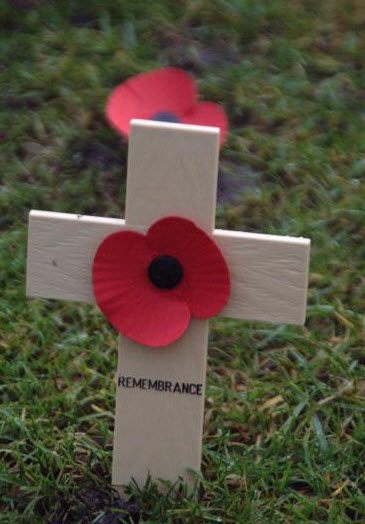
This memorial is a plaque inside St. Nicholas Church
| 1914 - 1918 | |
| Harry BARBER | Royal Fusiliers. Acting Corporal, 36318, 11th Battalion. Killed in action Tuesday, 23rd October 1917 in France & Flanders. Age 20. Enlisted Newmarket, resident Kennett. Son of George and Harriett Barber, of Barrow Green, Barrow, Bury St. Edmund's. Commemorated on TYNE COT MEMORIAL, Zonnebeke, West-Vlaanderen, Belgium. Panel 28 to 30 and 162 to 162A and 163A |
| Ernest Thomas BULLETT | Coldstream Guards Pte. 5th Reserve Bt., d 10/2/1915, age 23, wounded at La Bassee and died at Newcastle Hospital. Buried: KENNETT (ST. NICHOLAS) CHURCHYARD, Cambridgeshire, United Kingdom. Son of Walter and Eliza Maria Bullett, of Station Yard, Kennett. Born Kentford, Suffolk, enlisted Walthamstow, Essex, resident Kennett. |
| Arthur Edward HARDING | R.H.A. Drv. 20th Trench Mortar Bty., Royal Field Artillery, died of wounds 5/10/1916, age 26, buried: GROVE TOWN CEMETERY, MEAULTE, Somme, France. Son of Charles and Sarah Ann Harding, of Hall Cottages, Kennett, Newmarket, Cambs. Born Newmarket, enlisted Consett, Durham. |
| Benjamin LAWRENCE | East Kent Reg. 6th Bt. (From gravestone - Gassed 14/3/1916 at Halluch, France, d 2/3/1917 (N.B. 1917 on gravestone, 1919 CWGC - as he does not appear in the SDGW 1919 would seem more appropriate), age 22 at Kennett). Buried in Kennett Churchyard. |
| William MOSS | R.N.probably : William Moss, Boy 1st Class J/22017 H.M.S. "Bulwark.", Royal Navy who died on Thursday, 26th November 1914. Age 17. Son of William and Ann Moss, of Little Livermere, Suffolk. Commemorated on PORTSMOUTH NAVAL MEMORIAL, Hampshire. Panel 3. |
| Albert Edward TIMMINS | Grenadier Guards 3rd Bt., d 8/10/1915, commemorated: LOOS MEMORIAL, Pas de Calais, France. Son of Edward and Martha Elizabeth Timmins. Born Flanhamlock, Brecon, enlisted Bury St. Edmund's. |
| 1939 - 1945 | |
| Roy Ernest NEWMAN | Sgt. 202 Sqdn. R.A.F.V.R., d 4/8/1943, age 22, commemorated: RUNNYMEDE MEMORIAL, Surrey, United Kingdom. Son of Herbert William and Annie Newman, of Kennett, Cambridgeshire. |
| Charles Alexander SORE | Spr. 705 Army Troops Coy., Royal Engineers, d 26/9/1944, age 43, buried: TILLY-SUR-SEULLES WAR CEMETERY, Calvados, France. Son of Henry and Minnie Sore; husband of Mabel Gladys Sore, of Kennett, Cambridgeshire. |
| [Frederick] Walter Ollis STREET-PORTER | F/O, 114 Sqdn. R.A.F.V.R., d 14/1/1942, commemorated: RUNNYMEDE MEMORIAL, Surrey, United Kingdom. |
| Kenneth Reginald TURNER | Possibly: Flt. Sgt. 55 Sqdn., R.A.F., d 7/4/1944, age 21, buried: ASSISI WAR CEMETERY, Italy. Son of Reginald Ernest Willie and Elizabeth Mary Turner. |
Parish Council
Councillors - Kennett Parish Council
Name Position Image
Darren Watson Chair
14 Dane Hill Road
Kennett
Nr.Newmarket
Suffolk
CB8 7QY
Tel: 01-638-552311
E-Mail: This email address is being protected from spambots. You need JavaScript enabled to view it.
Mark Hillyer Deputy Chair
The Rectory
XX Dane Hill Road
Kennett
Nr. Newmarket
Suffolk
CB8 XXX
Tel: 01-638-XXXXXX
E-Mail: This email address is being protected from spambots. You need JavaScript enabled to view it.
Diane Wallis Councillor
126 Station Road
Kennett
Nr. Newmarket
Suffolk
CB8 XXX
Tel: 01-638-751646
E-Mail: This email address is being protected from spambots. You need JavaScript enabled to view it.
Robin Swanson Councillor
22 Station Road
Kennett
Nr. Newmarket
Suffolk
CB8 XXX
Tel: 01-638-750067
E-Mail: This email address is being protected from spambots. You need JavaScript enabled to view it.
Derek Miles Councillor
Buffers
74A Station Road
Kennett
Nr. Newmarket
Suffolk
CB8 7QF
Tel: 01-638-751362
E-Mail: This email address is being protected from spambots. You need JavaScript enabled to view it.
Vacancy Councillor
Vacancy Councillor
Vacancy Parish Clerk
Nature Notes
Birds Seen in the garden
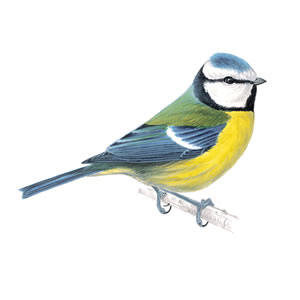 Blue Tit
Blue Tit
Its colourful mix of blue, yellow, white and green make the blue tit one of the most attractive resident garden birds. Almost any garden with a peanut feeder will attract them and they readily breed in nestboxes. In winter they form flocks with other tit species and a garden with four or five at a bird table at any one time, may be feeding 20 or more.
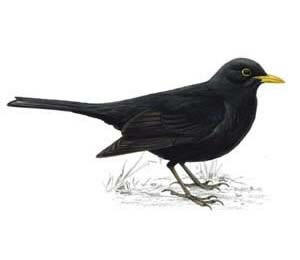 Blackbird
Blackbird
The males live up to their name but, confusingly, females are brown often with spots and streaks on their breasts. The bright orange-yellow beak and eye-ring make adult male blackbirds one of the most striking garden birds. One of the commonest UK birds, its mellow song is also a favourite.
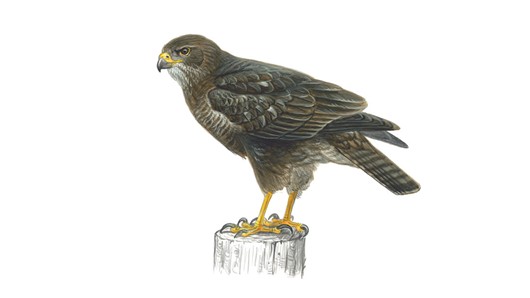 Buzzard
Buzzard
Now the commonest and most widespread UK bird of prey. It is quite large with broad, rounded wings, and a short neck and tail. When gliding and soaring it will often hold its wings in a shallow 'V' and the tail is fanned. Birds are variable in colour from all dark brown to much paler variations, all have dark wingtips and a finely barred tail. Their plaintive mewing call could be mistaken for a cat.
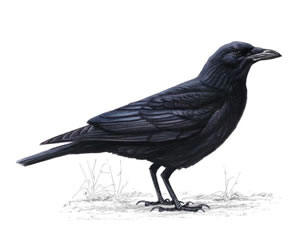 Carrion Crow
Carrion Crow
The all-black carrion crow is one of the cleverest, most adaptable of our birds. It is often quite fearless, although it can be wary of man. They are fairly solitary, usually found alone or in pairs. The closely related hooded crow has recently been split as a separate species. Carrion crows will come to gardens for food and although often cautious initially, they soon learn when it is safe, and will return repeatedly to take advantage of whatever is on offer.
 Chaffinch
Chaffinch
The chaffinch is the UK's second commonest breeding bird, and is arguably the most colourful of the UK's finches. Its patterned plumage helps it to blend in when feeding on the ground and it becomes most obvious when it flies, revealing a flash of white on the wings and white outer tail feathers. It does not feed openly on bird feeders - it prefers to hop about under the bird table or under the hedge. You'll usually hear chaffinches before you see them, with their loud song and varied calls.
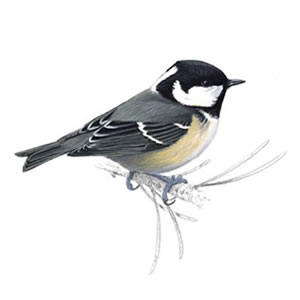 Coal Tit
Coal Tit
Not as colourful as some of its relatives, the coal tit has a distinctive grey back, black cap, and white patch at the back of its neck. Its smaller, more slender bill than blue or great tits means it can feed more successfully in conifers. A regular visitor to most peanut feeders, they will take and store food for eating later. In winter they join with other tits to form flocks which roam through woodlands and gardens in search of food.
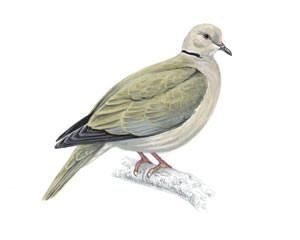 Collared Dove
Collared Dove
Distinctive with its buffy-pink plumage and black neck collar, it is usually seen singly or in pairs, although flocks may form where food is plentiful. It feeds on the ground but readily perches on roofs and wires. After rapidly spreading across Europe in the early half of the 20th century, the collared dove is now one of our most common birds and its monotonous cooing is a familiar sound.
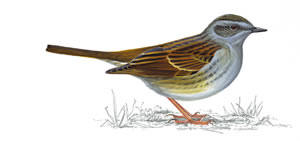 Dunnock
Dunnock
A small brown and grey bird. Quiet and inobtrusive, it is often seen on its own, creeping along the edge of a flower bed or near to a bush, moving with a rather nervous, shuffling gait, often flicking its wings as it goes. When two rival males come together they become animated with lots of wing-flicking and loud calling.
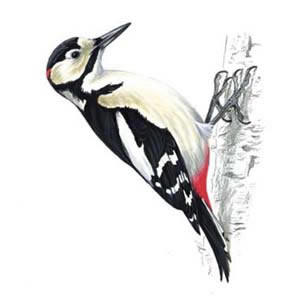 Greater Spotted Woodpecker
Greater Spotted Woodpecker
About blackbird-sized and striking black-and-white. It has a very distinctive bouncing flight and spends most of its time clinging to tree trunks and branches, often trying to hide on the side away from the observer. Its presence is often announced by its loud call or by its distinctive spring 'drumming' display. The male has a distinctive red patch on the back of the head and young birds have a red crown.
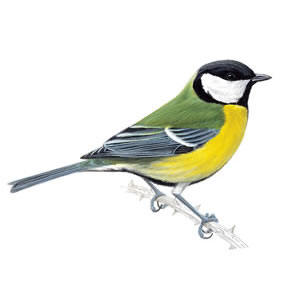 Great Tit
Great Tit
The largest UK tit - green and yellow with a striking glossy black head with white cheeks and a distinctive two-syllable song. It is a woodland bird which has readily adapted to man-made habitats to become a familiar garden visitor. It can be quite aggressive at a bird table, fighting off smaller tits. In winter it joins with blue tits and others to form roaming flocks which scour gardens and countryside for food.
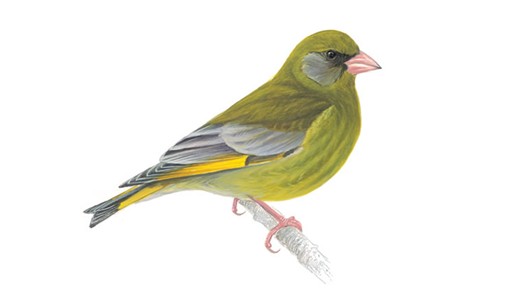 Greenfinch
Greenfinch
Its twittering and wheezing song, and flash of yellow and green as it flies, make this finch a truly colourful character. Nesting in a garden conifer, or feasting on black sunflower seeds, it is a popular garden visitor, able to take advantage of food in town and city gardens at a time when intensive agriculture has deprived it of many weed seeds in the countryside. Although quite sociable, they may squabble among themselves or with other birds .
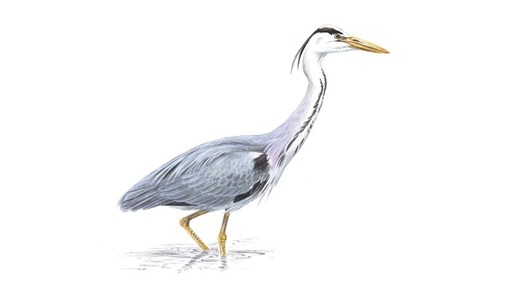 Grey Heron
Grey Heron
Grey herons are unmistakeable: tall, with long legs, a long beak and grey, black and white feathering. They can stand with their neck stretched out, looking for food, or hunched down with their neck bent over their chest.
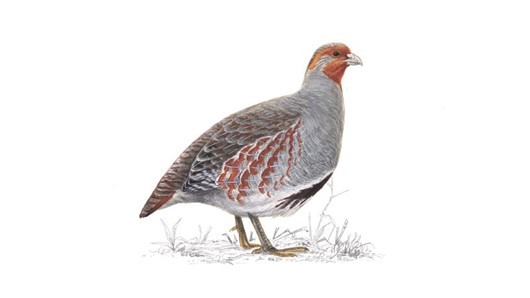 Grey Partridge
Grey Partridge
A medium-sized, plump gamebird with a distinctive orange face. Flies with whirring wings and occasional glides, showing a chestnut tail. It is strictly a ground bird, never likely to be found in pear trees! Groups of 6-15 (known as coveys) are most usually seen outside the breeding season. Once very common and widespread, it has undergone serious declines throughout most of its range and is a Red List species.
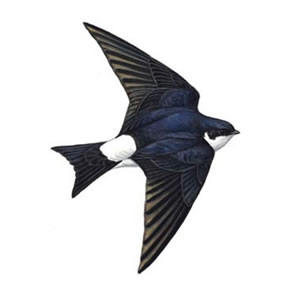 House Martin
House Martin
The house martin is a small bird with glossy blue-black upper parts and pure white under parts. It has a distinctive white rump with a forked tail and, on close inspection, white feathers covering its legs and toes. It spends much of its time on the wing collecting insect prey. The bird's mud nest is usually sites below the eaves of buildings. They are summer migrants and spend their winters in Africa. Although still numerous and widespread, recent moderate declines earn them a place on the Amber List.
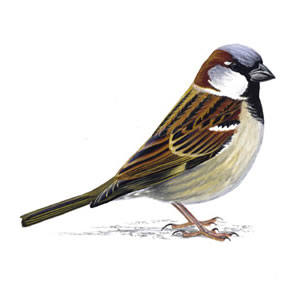 House Sparrow
House Sparrow
Noisy and gregarious, these cheerful exploiters of man's rubbish and wastefulness, have even managed to colonise most of the world. The ultimate opportunist perhaps, but now struggling to survive in the UK along with many other once common birds. They are clearly declining in both gardens and the wider countryside and their recent declines have earned them a place on the Red List.
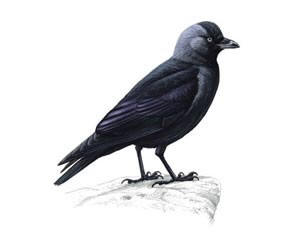 Jackdaw
Jackdaw
A small black crow with a grey neck and pale eyes. It is sociable and usually seen in pairs or larger groups. It is quite and acrobatic flier and flocks will often chase and tumble together in flight. On the ground it both walks and hops.
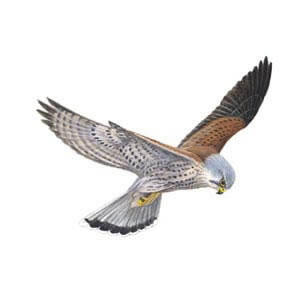 Kestrel
Kestrel
A familiar sight with its pointed wings and long tail, hovering beside a roadside verge. Kestrels have been recently declining as a result of habitat degradation due to continuing intensive management of farmland and so it is included on the Amber List. They have adapted readily to man-made environments and can survive right in the centre of cities.
 Kingfisher
Kingfisher
Kingfishers are small unmistakable bright blue and orange birds of slow moving or still water. They fly rapidly, low over water, and hunt fish from riverside perches, occasionally hovering above the water's surface. They are a vulnerable to hard winters and habitat degradation through pollution or unsympathetic management of watercourses. Kingfishers are amber listed because of their unfavourable conservation status in Europe.
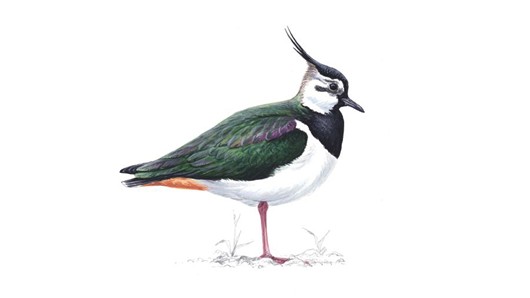 Lapwing
Lapwing
Also known as the peewit in imitation of its display calls, its proper name describes its wavering flight. Its black and white appearance and round-winged shape in flight make it distinctive, even without its splendid crest. This familiar farmland bird has suffered significant declines recently and is now an Red List species.
 Jay
Jay
Although they are the most colourful members of the crow family, jays are actually quite difficult to see. They are shy woodland birds, rarely moving far from cover. The screaming call usually lets you know a jay is about and it is usually given when a bird is on the move, so watch for a bird flying between the trees with its distinctive flash of white on the rump. Jays are famous for their acorn feeding habits and in the autumn you may see them burying acorns for retrieving later in the winter.
 Magpie
Magpie
Magpies seem to be jacks of all trades - scavengers, predators and pest-destroyers, their challenging, almost arrogant attitude has won them few friends. With its noisy chattering, black-and-white plumage and long tail, there is nothing else quite like the magpie in the UK. When seen close-up its black plumage takes on an altogether more colourful hue with a purplish-blue iridescent sheen to the wing feathers, and a green gloss to the tail. Non-breeding birds will gather together in flocks.
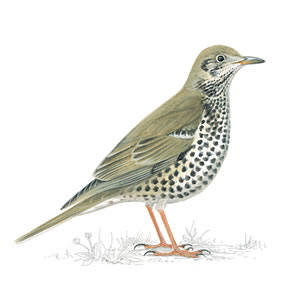 Mistle Thrush
Mistle Thrush
This is a pale, black-spotted thrush - large, aggressive and powerful. It stands boldly upright and bounds across the ground while in flight, it has long wings and its tail has whitish edges. It is most likely to be noticed perched high at the top of a tree, singing its fluty song or giving its rattling call in flight.
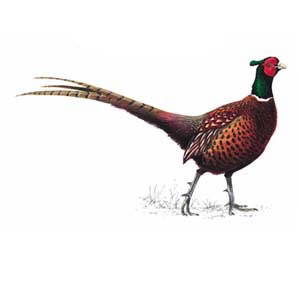 Pheasant
Pheasant
A large, long-tailed gamebird. Males have rich chestnut, golden-brown and black markings on body and tail, with a dark green head and red face wattling. Females are mottled with paler brown and black. They were introduced to the UK long ago and more recent introductions have brought in a variety of races and breeds for sport shooting.
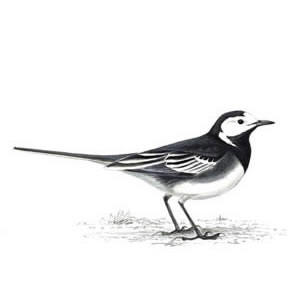 Pied Wagtail
Pied Wagtail
A delightful small, long-tailed and rather sprightly black and white bird. When not standing and frantically wagging its tail up and down it can be seen dashing about over lawns or car parks in search of food. It frequently calls when in its undulating flight and often gathers at dusk to form large roosts in city centres.
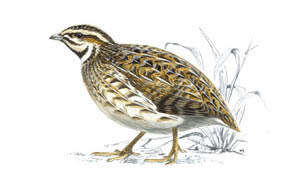 Quail
Quail
A small gamebird - the combination of its stocky body and long, pointed wings makes it quite distinctive. Its upperparts are brown, streaked and barred with buff, while its underparts are a warm buffy orange. Rarely seen it is more usually heard giving its distinctive 'wet-my lips' call. It is the UK's only migrant gamebird, reaching the northern fringes of the its breeding range here. It is a Red List species because of its historical decline as a UK breeding species.
 Robin
Robin
The UK's favourite bird - with its bright red breast it is familar throughout the year and especially at Christmas! Males and females look identical, and young birds have no red breast and are spotted with golden brown. Robins sing nearly all year round and despite their cute appearance, they are aggressively territorial and are quick to drive away intruders. They will sing at night next to street lights.
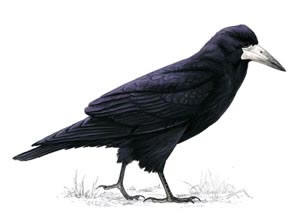 Rook
Rook
Bare, greyish-white face, thinner beak and peaked head make it distinguishable from the carrion crow. Rooks are very sociable birds, and you're not likely to see one on its own. They feed and roost in flocks in winter, often together with jackdaws.
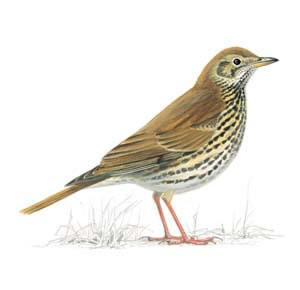 Song Thrush
Song Thrush
A familiar and popular garden songbird whose numbers are declining seriously, especially on farmland making it a Red List species. Smaller and browner than a mistle thrush with smaller spotting. Its habit of repeating song phrases distinguish it from singing blackbirds. It likes to eat snails which it breaks into by smashing them against a stone with a flick of the head.
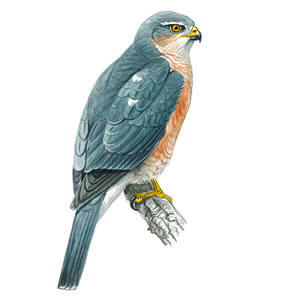 Sparrowhawk
Sparrowhawk
Adult males have a slate grey back and white underparts, closely barred with orange. Their grey tail has 4-5 dark bars. Females are larger, with brown upperparts, a white stripe over the eye and dark barring underneath. They look heavier than the males. Their broad, rounded wings and long tail are adapted for flying between trunks and branches enabling them to weave in and out of trees at high speed. They never hover like kestrels.
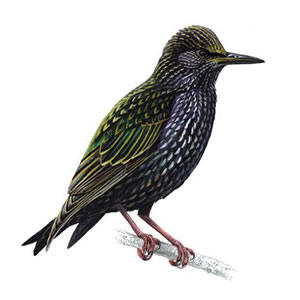 Starling
Starling
Smaller than blackbirds, with a short tail, pointed head, triangular wings, starlings look black at a distance but when seen closer they are very glossy with a sheen of purples and greens. Their flight is fast and direct and they walk and run confidently on the ground. Noisy and gregarious, starlings spend a lot of the year in flocks. Still one of the commonest of garden birds, its decline elsewhere makes it a Red List species.
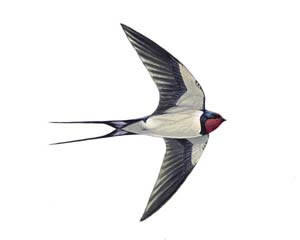 Swallow
Swallow
Swallows are small birds with dark glossy blue backs, red throats, pale under parts and long distinctive tail streamers. They are extremely agile in flight and spend most of their time on the wing. They are widespread breeding birds in the Northern Hemisphere, migrating south in winter. Recent declines due to loss of habitat quality in both their breeding and wintering grounds mean they are an Amber List species.
 Swift
Swift
The swift is a medium-sized aerial bird, which is a superb flier. It evens sleeps on the wing! It is plain sooty brown, but in flight against the sky it appears black. It has long, scythe-like wings and a short, forked tail. It is a summer visitor, breeding across the UK, but most numerously in the south and east. It winters in Africa.
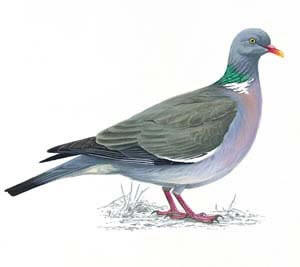 Woodpigeon
Woodpigeon
The UK's largest and commonest pigeon, it is largely grey with a white neck patch and white wing patches, clearly visible in flight. Although shy in the countryside it can be tame and approachable in towns and cities. Its cooing call is a familiar sound in woodlands as is the loud clatter of its wings when it flies away.
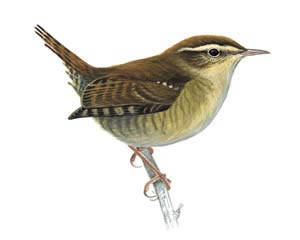 Wren
Wren
The wren is a tiny brown bird, although it is heavier, less slim, than the even smaller goldcrest. It is dumpy, almost rounded, with a fine bill, quite long legs and toes, very short round wings and a short, narrow tail which is sometimes cocked up vertically. For such a small bird it has a remarkably loud voice. It is the commonest UK breeding bird, although it suffers declines during prolonged, severely cold winters.
All bird pictures and text extracted from RSPB website © 2007 The Royal Society for the Protection of Birds. Charity registered in England and Wales no 207076, in Scotland no SCO 37654






















































